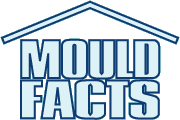Friday, April 30, 2010
This blog is now located at http://mouldfacts.blogspot.com/. You will be automatically redirected in 30 seconds, or you may click here. For feed subscribers, please update your feed subscriptions to http://mouldfacts.blogspot.com/feeds/posts/default.
Sunday, January 24, 2010
Mold In Basement
Question: Hi there, I was hoping to get some clarity on some potential mold issues. We currently rent out a basement unit. We have never had issues before but the current tenant refuses to run the dehumidifier, as a result her wicker headboard got moldy. We had an air quality test that showed the total airborne fungal spore count for the outdoor sample was 11,000 per cubic meter and the indoor count was 43,000 per cubic meter. The testing company said they will come in and clean visible mold and that should take care of it after more indoor tests. I am just worried about spending another $600.00 and still have the same issues. Is this the correct process, should we be allowing the tenant to move back in after this 'surface' clean? Are those results worrisome? Any thoughts would be great. Thanks.
Answer: The testing company is right in suggesting a cleanup of the visible mold. However, cleaning the mold without addressing the underlying cause is a waste of resources since the mold will grow again after a few months if not weeks. The best way to control mold growth in a building is to correct moisture problems in addition to cleaning. You may get more information on mold removal at the Canadian Construction Association's website at http://www.cca-acc.com/homepage_e.asp. Labels: basement, fungi, growth, Mold, mould, spores
Thursday, January 21, 2010
Elevated Levels of Airborne Fungal Spores
Question: We live in a new home (completed Aug2006). Our house has been tested for mold and the tests have found wet plywood sheathing(>17%) and elevated levels of airborne fungal spores - in particular, the Aspergillus/Penicillium. My husband and I have both had coughs since December/2007. Should I be asking my doctor to do any specific tests? Our house was drywalled and insulated 2 months BEFORE the tarpaper and siding were installed, thus the drywall and insulation was saturated several times during the June/2006 rains. Do you have any other advice for us?
Answer: It is possible the cough is not related to mold. However, I would suggest you consult your doctor. Also, since the tests have indicated elevated levels of Aspergillus/Penicillium, you may want to hire a professional to assess the extent of mold contamination and recommend appropriate level of remediation. Labels: aspergillus, Mold, penicillium, spores
Wednesday, January 20, 2010
Signs Of Mold In My House
Question: I have no visible signs of mold in my house... We have been living in it for 7 months and just before that the majority of the house was gutted and re-done. Recently I have had several people tell me that there is black mold in the house... on the outside specifically. These are obviously uneducated people as I know for a fact that what they're talking about is dirt on my house from an old raised flower bed I removed. I guess my question is - what can I do to prove them wrong... I know I could probably take a sample of the dirt on the house for testing but as far as inside the house where there are no signs of mold what can I do to prove it- I just don't want this to escalate and cause a problem when we want to sell...Also how much would it cost to get a dirt sample tested for black mold.lol. I'm sorry this is just ridiculous to me. Small towns, I tell ya. Any advice you have would be greatly appreciated.
Answer: I can understand your concern. If people are seeing the dirt on the outside and they are mistaking it for black mold, I would suggest you have it cleaned up if possible. As for prospective buyers, you could have the house tested for mold by a qualified professional. Generally, where there are no signs of mould, air samples could be taken. Labels: air quality, black, Mold, mould, samples, testing
Tuesday, December 08, 2009
Mold Testing In Toronto
MBL is a leading provider of mold testing laboratory services in the Greater Toronto Area (GTA) and the rest of Canada. As a mold and bacteria laboratory, the lab specializes in analysis of air and surface samples for:
- Bacteria testing including E.coli testing and Legionella testing, total aerobic counts
- Mold testing: Culturable Air samples such as RCS, BioCassette, Andersen, SAS, etc.
- Mold testing: Direct Microscopic Examination of tape, bulk, swab, and water samples
- Mold Testing: Spore Trap including Air-O-Cell, BioAire, and Micro5 cassettes, Allergenco, Burkard and BioSIS slides
MBL's mold and bacteria testing services are not restricted to the Greater Toronto Area (GTA). We serve clients in British Columbia, Alberta, Saskatchewan, Manitoba, Ontario, Quebec, Nova Scotia and New Foundland. MBL clients include: - Industrial hygienists
- Environmental consultants
- Quality assurance managers
- Home Inspectors
- General contractors
- Cleaning and restoration contractors
- Property managers
- Insurance, financial, or legal professionals who deal with microbial contamination issues
For questions related to laboratory testing of samples, sampling methods, laboratory data interpretation and other issues related to microorganisms, please call 905-290-9101 (within Toronto area) or 1-866-813-0648 if calling outside the GTA. Labels: Mold, mold laboratory, mold testing, toronto
Wednesday, September 16, 2009
Mold and Moisture
Mold growth is not always visible depending on the stage of growth and also whether the color of the mold itself is the same as the color of the material it’s growing on. For example, a white mold growing on a white background may not be easily visible. Mold thrives where it’s damp. In water damaged indoor environments mold is often found on the inside of a wall cavity or on the underside of a carpet. While measuring the relative humidity in a building may indicate the potential for mold growth, the most important measurement is that of free water in the material. The “free water” is technically referred to as water activity and should not be confused with the moisture content of a material. The water activity ranges from 0 to 1. As the water activity of organic material exceeds about 0.65, there is an increasing likelihood that mold will grow on it. Different fungi have different moisture requirements. Based on water requirements molds can be categorized as primary, secondary or tertiary colonizers. Primary fungal colonizers- Capable of growing at low water activity (<0.85).
- Primary colonizers prefer simple sugars.
- Primary fungal colonizers include molds such as:
- Aspergillus versicolor
- Aspergillus versicolor(25°C)
- Eurotium spp.
- Paecilomyces variotii
- Penicillium aurantiogriseum
- Penicillium brevicompactum
- Penicillium chrysogenum
- Wallemia sebi
Secondary fungal colonizers- Require intermediate levels of water activity (0.85-0.90).
- Secondary fungal colonizers include:
- Aspergillus flavus
- Aspergillus nidulans
- Aspergillus sydowii
- Aspergillus versicolor (12°C)
- Cladosporium cladosporioides
- Cladosporium sphaerospermum
- Mucor circinelloides
- Rhizopus oryzae.
Tertiary fungal colonizers- Require high water activity (>0.90), i.e., wet conditions. This group of fungi is generally used as indicator of moisture damage. Some tertiary colonizers, such as Chaetomium globosum and Stachybotrys chartarum prefer complex sugars (such as cellulose) or complex organics (such as wood).
- Tertiary fungal colonizers include:
- Alternaria alternata.
- Aspergillus fumigatus
- Chaetomium spp.
- Epicoccum spp.
- Exophiala spp.
- Fusarium spp.
- Mucor plumbeus
- Memnoniella echinata
- Phialophora spp.
- Phoma herbarum
- Rhizopus spp.
- Stachybotrys chartarum
- Trichoderma spp.
- Ulocladium consortiale.
Labels: activity, moisture, Mold, water
Sunday, August 02, 2009
Does Mold Contribute to Respiratory Disease and Allergic Reactions?
Does mold contribute to respiratory disease and allergic reactions? The answer is yes. This happens when susceptible individuals inhale excessive amounts of spores and other tiny fragments of mold. Prolonged exposure to mold spores can also elicit sensitivity. What are mold spores and how do they affect us?- Mold spores are tiny structures produced by molds for propagation.
- Inhaled spores and mold fragments can cause allergic reactions such as runny nose and eyes, and asthma-like symptoms.
- Prolonged exposure to unusually large numbers of spores and fragments can result in the development of allergic alveolitis.
- Spores of pathogenic fungi if inhaled can infect the respiratory system and the rest of the body.
Generally there are less spores indoors than outdoors. Therefore, unless there is actively growing mold in a home the amount of mold spores present in a home are very unlikely to affect the occupants. However, in industrial environments the concentration of spores can be very high. The types of molds present in industrial environments depend on work carried out and the prevailing conditions. Which environments are higher risks?- Mushroom farms,
- Saw mills,
- Paper mills,
- Composting areas,
- Waste disposal sites
. - Demolition sites,
- Agricultural environments, e.g., animal farms.
Labels: allergy, Mold, spores
|


